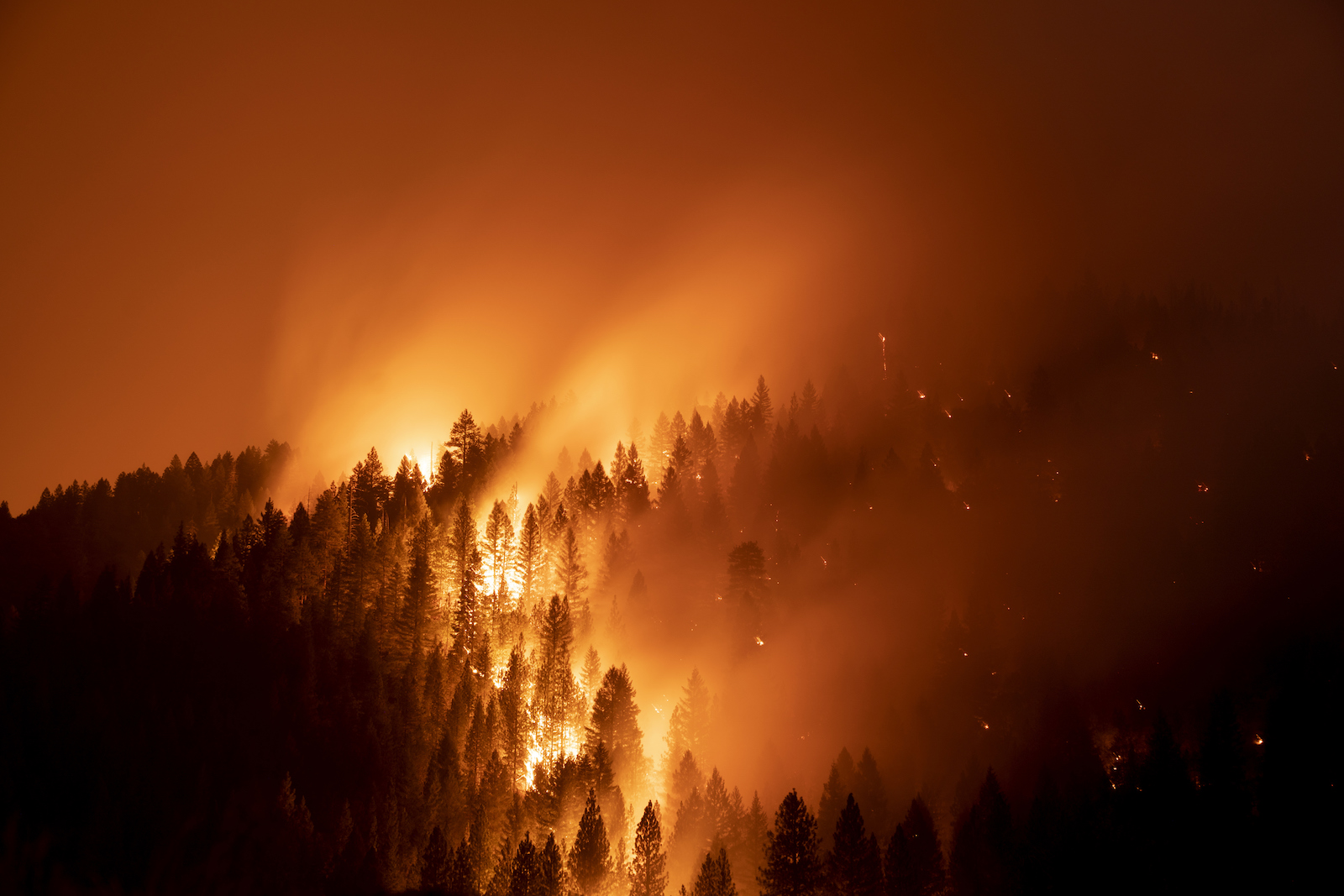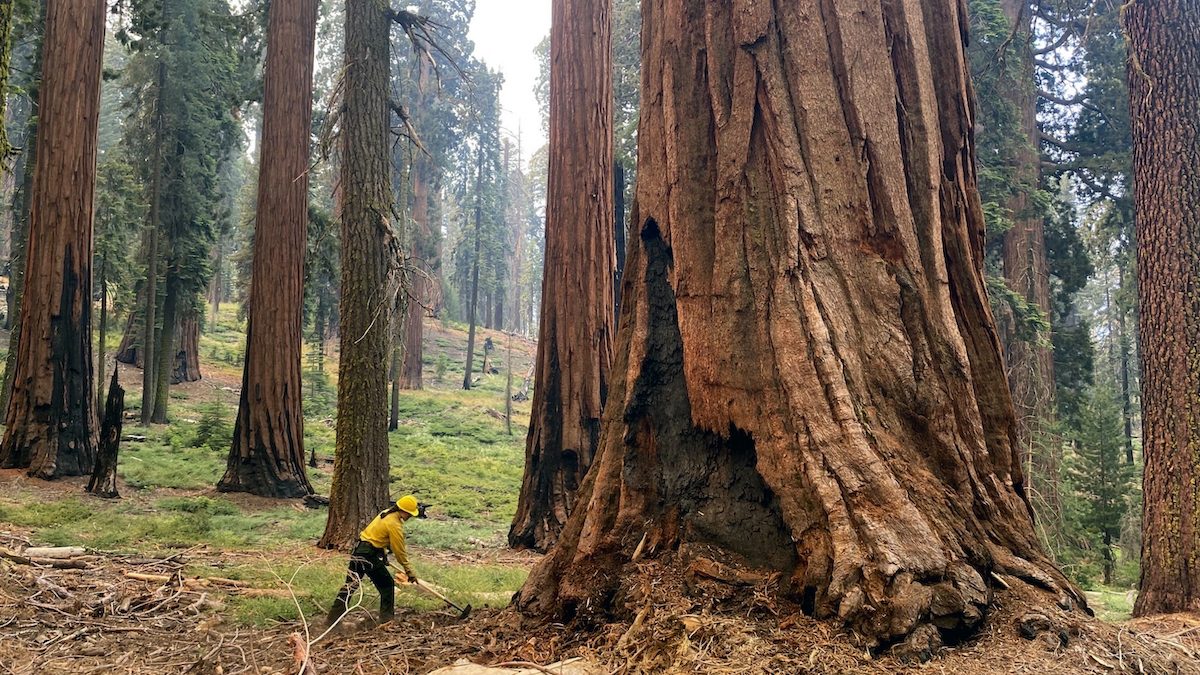I will never forget the first time I killed a tree. It was a warm January morning, and my forehead was sweating under my orange hardhat. I pulled the starter rope of my chainsaw, lifted the roaring silver blade, and sliced through a small Douglas fir. The tree barely made a sound as it fell.
With sawdust and the smell of fresh resin filling the air, I turned toward another fir and paused, wishing I knew a ritual to make its death easier. Within minutes, bits and pieces of seven trees lay strewn around me. I separated limbs from trunks and stacked them, hoping that orderly piles of firewood might alleviate my guilt.
I live in coastal Sonoma County, California, where Douglas firs grow faster than most other native trees, eventually shading oaks from sun and often killing them. The trees near my cabin are valley oaks, the largest of American oaks, found only in California. Each of them can live up to 600 years and will drop as many as 3 million acorns during its lifetime, making valley oaks the most important source of food and shelter for wildlife. I wanted to protect these ecological linchpins, but I also picked up that chainsaw three years ago to repay a childhood debt.
I love all trees, but I’m especially moved by oaks. One of my earliest memories is of hiding in the roots of a particularly majestic one as my parents fought and neighbors called the police. I remember its large, sturdy trunk protecting me from the wind, rain, and fear of violence. That tree still stands in southeastern Latvia, where I spent most of my life until my mother and I moved to San Francisco in 1994.
Eight years ago, I returned to my rural roots and found a home in the coastal range 70 miles north of San Francisco, on the unceded land of the Kashia Pomo people. The few remaining oaks here are surrounded by a sea of Douglas firs stretching to the Pacific Ocean.
For over a century, the American environmental movement has been animated by an intuitive and simple idea: Protecting trees means leaving forests alone. This stance — championed by men like John Muir and based on their belief that any alteration, including thinning or intentional burning, of wilderness harms it — was once key to stopping timber companies from wiping out old-growth forests entirely. And it was an approach that I embraced; for most of my life, I was categorically opposed to felling trees.
But that ethos created an unintended outcome: An expanding body of research shows that the West’s overgrown forests are fueling unnaturally severe wildfires that can cause irreparable ecological damage and massive economic loss. Living in rural areas during this period of catastrophic fires driven in no small part by climate change has forced many people — myself included — to look at tree cutting, and forests, differently.
My perspective began to shift in August 2020 when I attended a class led by Clint McKay, the Indigenous education coordinator at Pepperwood Preserve, a research station in eastern Sonoma County on the traditional homeland of the Wappo people. That summer, the region reached a record 115 degrees Fahrenheit, and two devastating wildfires, which together killed six people and destroyed 1,491 homes, came within a few miles of my home. I joined McKay’s popular Indigenous forest stewardship class expecting to master the use of prescribed burns to defend the forest. Instead, he spent much of our time explaining why people must become more comfortable with cutting down some trees — a necessary intervention in many dense forests before beneficial fires can be reintroduced safely.
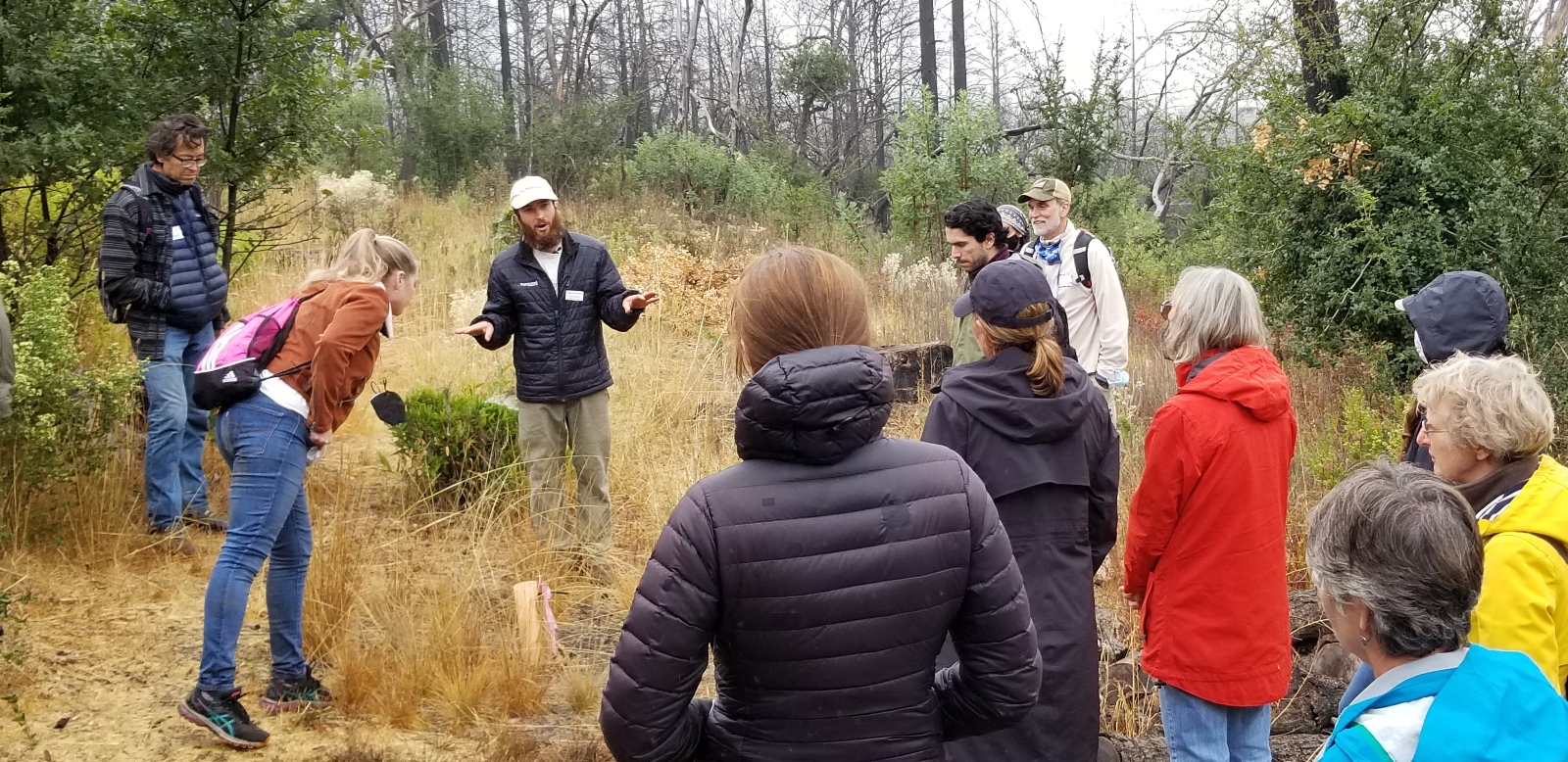
The Indigenous people of what is now California have always used fire and thinning to promote mosaics of large trees interspersed with shrubs and grasses. They also developed some of the most complex and sophisticated land stewardship practices that increased the density of rich crops of nuts, seeds, vegetables, and fruits — on a scale that is “unimaginable today,” writes Enrique Salmon, the author of Iwígara: American Indian Ethnobotanical Traditions and Science. This array of species and surfaces reduces fire intensity and promotes biodiversity. Salmon, who is Rarámuri and leads the American Indian Studies Program at California State University, East Bay, calls these practices “land gardening.”
But beginning in the early 19th century, as colonists settled the region, the Wappo were forced from their ancestral lands, and the intentional fires they and other Indigenous people used to tend forests were outlawed. The U.S. Forest Service was founded in 1905 with fire suppression as a key policy. Thirty years later, it tightened that approach, striving to extinguish all fires by 10 a.m. the next day, fundamentally changing the composition of the forests across the West.
Before European settlers arrived, the land Pepperwood now stewards sustained around 100 trees of varying sizes and species per acre. Today, that same acre supports 1,000 smaller trees that are less fire-resistant and starved for nutrients, water, and sunshine. Most scientists increasingly lament the overcrowding found throughout Western forests and call for ecological thinning — the selective cutting of smaller trees and undergrowth — typically followed by intentional fires to reduce the fuel load and recycle nutrients.
Since 2014, Pepperwood, which is not an Indigenous organization, has worked under the guidance of a Native advisory council, chaired by McKay, who is Wappo, Pomo, and Wintun, to implement such practices. The approach proved itself when the 2017 Tubbs Fire burned 95 percent of the preserve and the 2019 Kincade Fire scorched 60 percent. In the areas that had been thinned and prescriptively burned, few large trees died, and most wildlife soon returned and thrived. Since then, Pepperwood has provided a model of how combining science with local Indigenous research, knowledge, and practices can restore forest health and resiliency while mitigating the growing frequency and severity of fires.
The benefits of thinning coupled with intentional burns are widely accepted in the scientific community for helping to maintain the health and resiliency of Western forests. But a small group of vocal environmentalists and researchers argue that this approach is misguided, that forests must be left largely untouched. These critics argue that thinning is a ploy to increase commercial logging and that severe wildfires are critical for forest health and biodiversity.
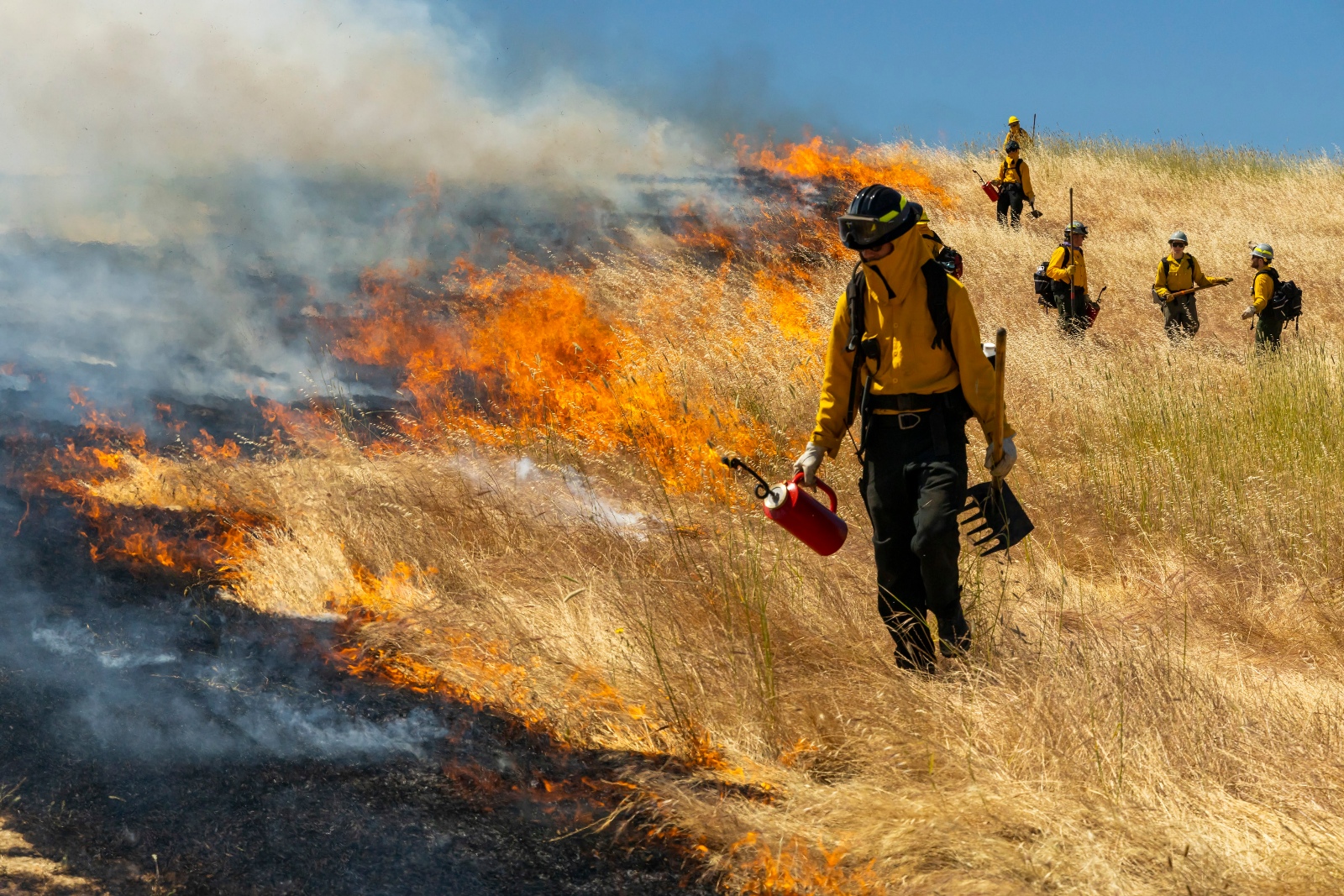
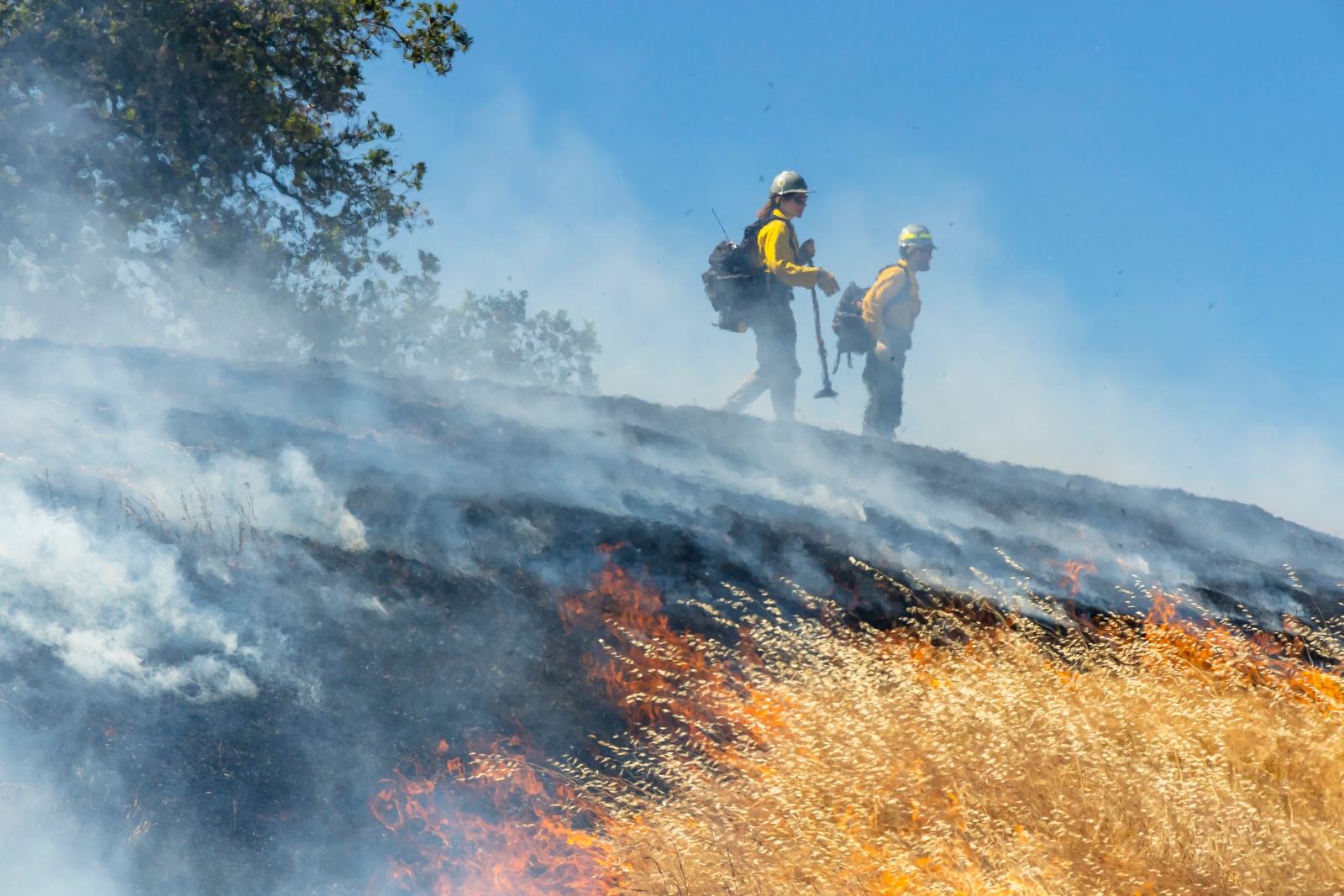
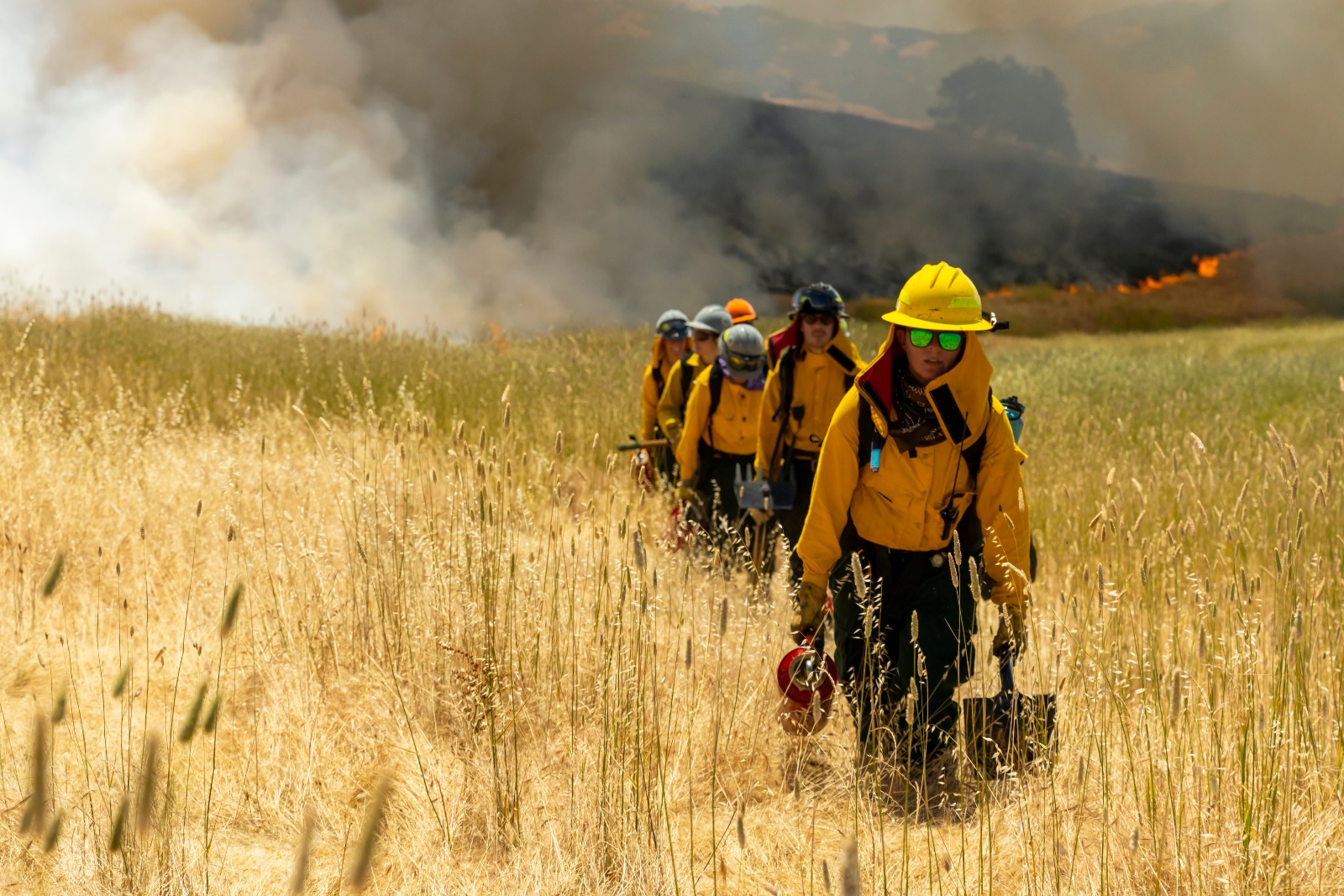
Prescribed-fire professionals ignite cultural burns. Ian Nelson
Their opposition comes even as warmer, drier weather contributes to larger, faster, and hotter fires. Fourteen of California’s 20 largest conflagrations on record occurred in the last decade, burning some 5.3 million acres, destroying 11,393 structures, and killing 35 people. Suppression costs continue breaking records, hitting $1.2 billion in 2021 alone. Modern megafires in the West are eight times more severe than those that burned when Indigenous people stewarded the land, often killing entire stands of healthy trees and making regeneration difficult. Researchers fear that over the next two decades, severe wildfires could turn huge swaths of forests into scrubland and destroy critical habitat.
The implications extend nationwide. Between 2001 and 2019, the U.S. ranked third globally in forest cover lost to fires. Wildfires now account for nearly half of the fine-particle pollution in the West. All that smoke can shroud distant places like Boston and New York, and it sends ever more people to hospitals with cardiac issues and asthma attacks. Catastrophic Western fires increasingly contribute to extreme storms and hail as far east as Nebraska.
The Golden State highlights a challenge facing states throughout the West. The California Department of Forestry and Fire Protection, or Cal Fire, estimates that roughly 15 million forested acres need restoration — mostly thinning and burning — but state and federal government agencies treat at most 325,000 acres each year.
That slow progress follows unprecedented government investment in wildfire resilience. The reasons are complex, but the impediment most frequently mentioned by fire and forest researchers, tribal leaders, park managers, prescribed-fire practitioners, and others is public opinion. While the support for beneficial fires has grown significantly in the past two years, many people still resist them or the smoke they generate. Others staunchly oppose tree cutting, or fear being vilified by those who do. Until that changes, these experts see little chance of making headway on an escalating problem.
“The view of forests as primeval, untouched nature still resonates strongly among the conservation-minded general public,” said Cristina Eisenberg, who is of mixed Rarámuri and Western Apache heritage and works as the associate dean of inclusive excellence and director of tribal initiatives at Oregon State University College of Forestry. “As a result, many people don’t trust Indigenous forest stewardship yet.”
It’s spring at Pepperwood Preserve, and the lush grasslands burst with color: golden poppies, cream buttercups, purple lupins. A group of 28 of us — a preschool teacher, several park managers, two musicians, a few retired couples — are climbing a narrow footpath. The gentle midmorning sun warms us as we follow McKay toward a ridge.
Considerate, composed, and generous with his knowledge of Wappo culture, McKay enjoys making frequent stops to show us plants important to his people and the health of the forest — soap root, Indian potato, and wild strawberries. Two of McKay’s relatives have joined him today, which seems to inspire lighthearted jokes about his family. Raised in a traditional Wappo and Pomo household, McKay spent much of his childhood gathering acorns, redbud, and willow for basket-weaving. The Indigenous people of this area are renowned for the artistry of their baskets, and McKay’s family includes two cultural icons: Works by his late aunts Mabel McKay and Laura Fish Somersal appear in museums and galleries around the world.
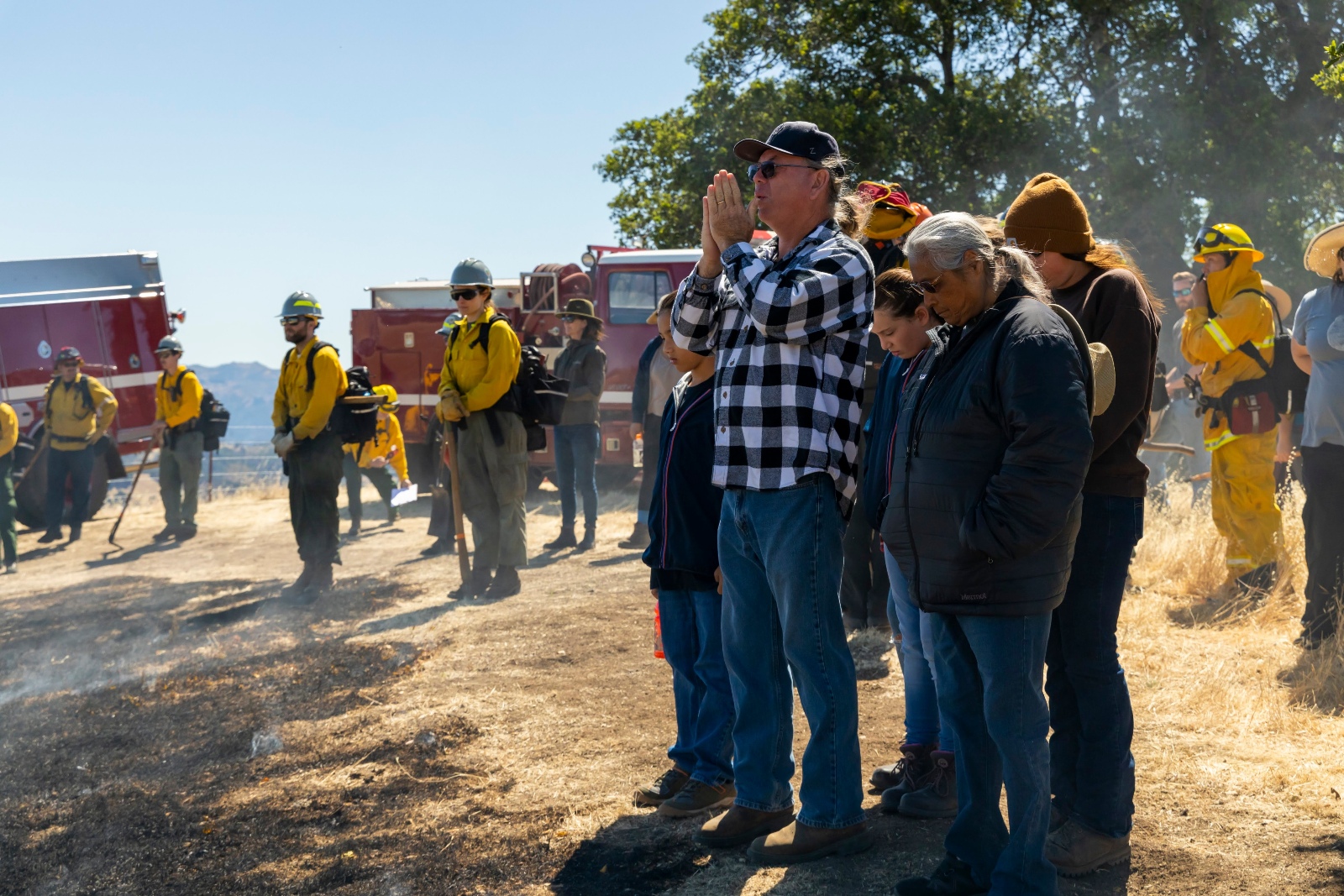
While growing up, every trip to the forest offered McKay a lesson in where each plant loved to live, what it needed to thrive, and how humans could read them to know if the land was out of balance. Plants and animals were considered kin and teachers. Observation of forests taught Wappo people the importance of open space and of viewing trees in terms of their needs and role sustaining humans, animals, and other plants.
For at least 10,000 years before Europeans arrived, the Indigenous peoples of what is now California benefited from and shaped a landscape that teemed with an incredible array of flora and fauna. As authors Otis Parrish and Kent G. Ligthfoot described in California Indians and Their Environment, their stewardship increased the diversity of plants and wildlife habitats, and it was this abundance that supported one of the most densely populated and culturally diverse areas in the world. Before colonization, about one-third of all Native peoples of what became the United States lived in the Golden State area, where they gardened forests spanning immense landscapes.
Small, frequent, and intentional fires were the main practice they used to promote biodiversity and reduce the severity of fires. In some forests, they also cut Douglas firs to increase the number of oaks and madrones that provided food and shelter for wildlife, cultural resources, and building materials. Weeding, tilling, and irrigating landscapes promoted edible grasses, herbaceous plants, and native vegetables and fruit.
As we reach the ridgeline, McKay has us survey a vast landscape with densely packed spears of blackened Douglas firs. Although the forest was thriving before the fires in 2017 and 2019, we see few signs of regeneration.
McKay then leads us to an oak woodland that had been thinned and burned before the fires. First, a crew with chainsaws cut the firs growing through the canopies of oaks. Brush and smaller trees were removed to prevent a blaze from reaching the crowns of mature trees. Then another team built hundreds of small “burn piles” and set them alight, clearing the slash. Today, lush, green clumps of black and coast live oaks and bay laurel dot verdant meadows. It is hard to see any sign of those past wildfires.
Oaks don’t burn as hot as firs, they cause less destruction of neighboring plants, and they provide crucial protection for animals and birds during conflagrations, says McKay, who researches black oaks and has contributed to studies about them. As we take in distant peaks and silver rock outcroppings dotted with oaks and bay laurels, someone asks, “Was every acre here managed when the Wappo people lived on this land?”
McKay pauses before answering. “We cared for every part of this forest, but living with the land is different than managing it,” he says. “I don’t believe we have the right to control nature. We work with it from a place of responsibility, respect, and reciprocity. This means that every time we do something in the forest, we ask, ‘What is in the best interest of animals, plants, soil, water, air, and humans?’ Humans are in that circle, but we are just one of the spokes in the wheel.”
When humans begin to view themselves as part of the land, he says, they can learn how to become thoughtful participants in nature, share obligations, and express their gratitude by tending landscapes for the benefit of all species.
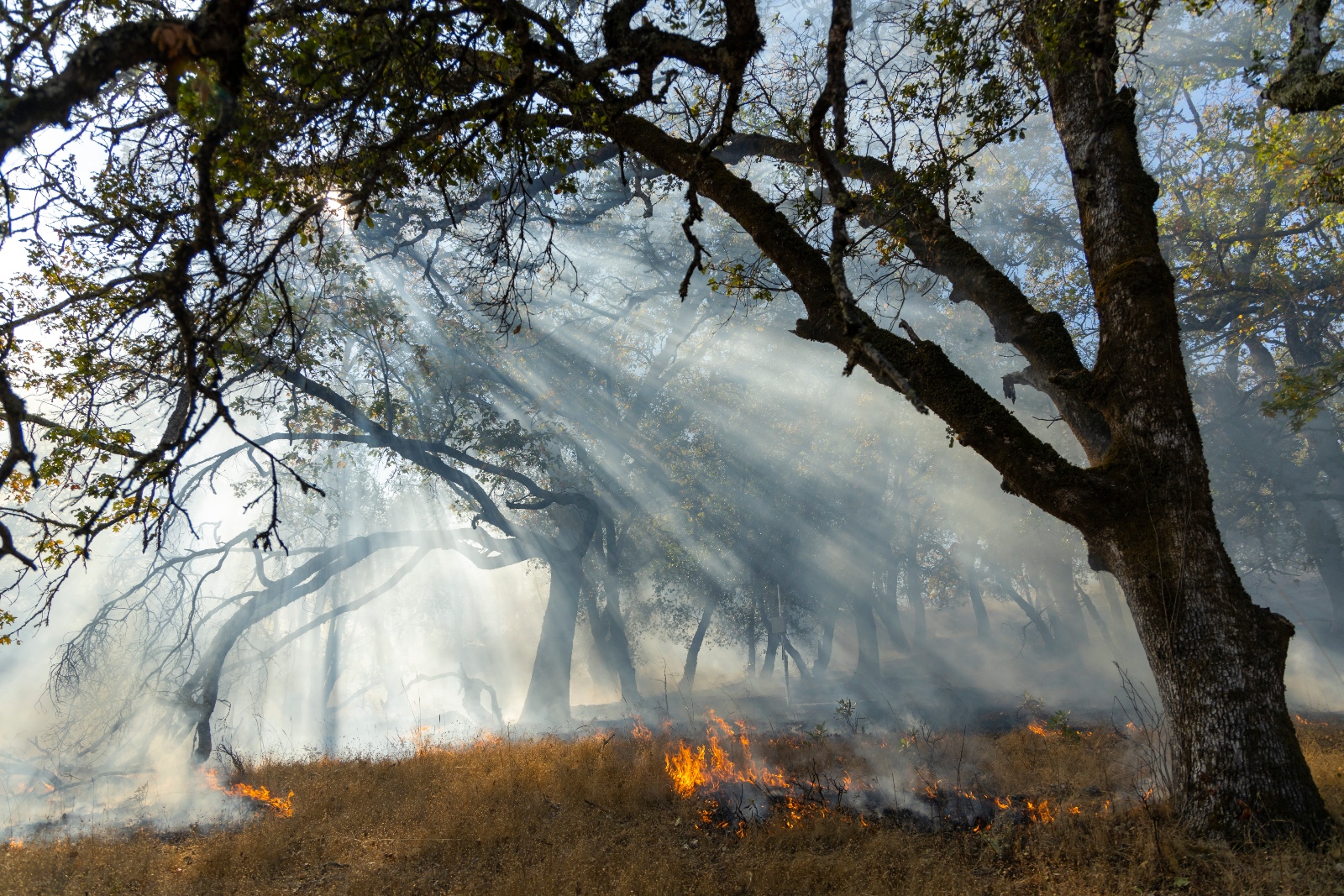
When the U.S. seized control of what is now California in 1850, the federal government signed 18 treaties in which tribes ceded about 90 percent of the land in return for 7.5 million acres of reservations. The U.S. Senate, at the request of state officials, rejected those agreements without informing the tribes, leaving them without land of their own. That same year, California legislators passed a bill that allowed the enslavement of Indigenous children and indentured servitude of adults, and banned intentional fires. The new government then funded militias to remove Native people from their traditional lands and killed thousands of people — something Governor Gavin Newsom called genocide and formally apologized for in 2019.
At the beginning of Euro-American contact, between 200,000 to 300,000 Indigenous people lived in what became the Golden State. By 1870, that number — driven by forced removal, violence, and disease — dropped to 12,000. As immigrants flooded the West Coast, many often described the depopulated forests they found as parks, but as researcher M. Kat Anderson notes in Tending the Wild: Native American Knowledge and the Management of California’s Natural Resources, settlers assumed California’s rich biodiversity was born of untouched wilderness, not Indigenous effort. They also believed that they had a God-given right to profit from those resources, which they viewed as limitless.
During the Gold Rush, trees became extremely valuable as construction materials and fuel. By 1900, 40 percent of California’s 31 million acres of old-growth forest had been logged in what historian Hank Johnston called “the greatest orgy of destructive lumbering in the history of the world.”
Into this destruction stepped John Muir.
Raised in a devout Christian family, Muir grew up with a strict father who forbade all distractions from Bible studies. He found refuge in nature, which sparked an interest in geology and botany. But it was while hiking in the Sierra Nevadas that he first saw “sparks of the Divine soul” in its trees and rocks. Muir, who co-founded the Sierra Club in 1892, spent the rest of his life trying to bring city dwellers closer to the presence of the deity he perceived in the mountains and forests. “God never made an ugly landscape,” he wrote in 1897. “All that the sun shines on is beautiful, so long as it is wild.”
More than anyone else, Muir galvanized public support for the protection of nature against ecological degradation, but he didn’t believe that Indigenous people and their stewardship had a place in what he saw as pure wilderness. He supported the removal of the Miwok from their homelands in what became Yosemite National Park, and the government pursued a century-long policy of pushing them out of the area. Like other well-known environmentalists of his day, including Henry David Thoreau and Ralph Waldo Emerson, Muir believed that wildlands existed to help “tired, nerve-shaken, over-civilized people” suffering from “the vice of over-industry and the deadly apathy of luxury.” He promoted the idea, still resonant today, of nature as a refuge separate from human civilization.
Around the time that Muir was hiking and preaching the gospel of untouched wilderness, burgeoning Midwestern naturalist Aldo Leopold was getting hunting lessons from his father. In 1909, Leopold earned a forestry degree from Yale University, which launched the nation’s first graduate school focusing on the subject. Initially he approached forests as human-centered projects: sustainable tree farms grown for the benefit of people and cattle. Over time, he changed his mind. Co-founding the scientific ecology movement and, in 1935, the Wilderness Society, he became a leading environmentalist — the “most radical” in the estimation of conservation activist and novelist Wendell Berry.
A lifelong outdoorsman and hunter, and later the owner of a small farm, Leopold shared little in common with Muir. While he advocated for the creation of parks and protection of sensitive habitats, he didn’t view preserving the land and using plants and animals sustainably as mutually exclusive. Instead, he believed the land was improved by ethical and sustainable management.
Leopold did not believe that the environmental movement should prioritize the preservation of celebrity trees, parks with epic views, or charismatic animals. Rather, he argued that humans must promote the health of the land everywhere, including nature in urban centers and degraded farms — and that the requirements of doing so were specific to each place. “A thing is right when it tends to preserve the integrity, stability, and beauty of the biotic community,” he wrote. “It is wrong when it tends otherwise.”
Years later, his successor, restoration ecologist William Jordan, argued that treating wildlands as exotic trophies or using nature solely for extraction of resources are essentially different sides of the same coin: Both worldviews promote alienation from nature. And both continue to shape modern environmentalism and forest management tactics, often to the detriment of the very land they are meant to protect.
The Western U.S. is a home to some of the most beautiful landscapes on earth, but California’s iconic trees — among the world’s tallest, largest, and oldest — in particular have long inspired passionate devotion. It’s no surprise that the Golden State has been the epicenter of the American environmental movement.
The idea behind Earth Day originated in California in 1969. It helped launch the second wave of the environmental movement, a response to the degradation of nature wrought by the post-war boom. Between 1945 and 1960, timber harvests in the national forests of the Pacific Northwest more than doubled to 5 billion board feet as the U.S. Forest Service allowed the clear-cutting or razing of entire stands of trees, often ancient redwoods, to accommodate rapid suburban growth.
As pictures of barren land proliferated, environmental activists filed lawsuits that effectively stopped large-scale clear-cutting and helped people see forests as sources of biological diversity, not warehouses of lumber. In tandem with these changes, the federal government enacted a variety of historic bills to protect the environment, and California passed the Forest Practice Act of 1973, which to this day is recognized as the most comprehensive forestry regulation in the country.
Thanks to this activism and regulation, today, nearly 33 million acres — about a third of California — remains forested. All that land is home to nearly one-third of the plant and animal species in America, making it one of 34 global biodiversity hotspots in the world. The Golden State remains a national leader in conservation, but climate change and increasingly severe droughts present unprecedented challenges.
“About 80 percent of bishop pines are either dead or dying here,” Matt Greene, a forester who works with the Kashia Band of Pomo Indians of the Stewarts Point Rancheria, state parks, and private landowners in Sonoma County, told me while pointing toward a coastal ridge blanketed in cinnamon-brown canopies. These pines are among the hardiest of trees, but the worst drought in 12 centuries coupled with 100 years of aggressive fire suppression made this forest vulnerable to an unprecedented onslaught of pests and diseases. As we drive east, Greene shows me another forest in which around 90 percent of tanoaks, a culturally important tree for the Kashia Pomo people, have died in the past decade from sudden oak disease.
All this wood, often left standing or where it falls, helps create high-severity fire patches. Such areas, in which a conflagration kills 75 to 100 percent of the trees, are larger and occur more frequently than at any time in recorded history. Some level of fire intensity is essential to maintain biodiversity, but prior to European settlement, such patches typically covered a few acres. Today, they can range from hundreds to thousands of acres, creating an alarming impediment to the ability of conifer trees to regenerate.
When the Wappo and other Indigenous peoples tended the forests, their mosaics of trees, shrubs, and grasslands promoted biodiversity and “pyrodiversity” — fires with greater variation in unburned and low-, moderate, and high-intensity areas. A wildfire traveling through patches of mixed vegetation tends to be less severe, because openings in the landscape create areas with less fuel. In some woodlands, Indigenous people “weeded” fir seedlings and saplings by hand to prevent their encroachment on oaks or grasslands, as the ethnobiologist M. Kat Anderson has documented.
I remember the day I read about this in 2021, because that summer, I began to feel a change of heart. Like many Californians, I’d long believed that planting and protecting trees was the only way to save them, and the sight of anyone with a chainsaw created feelings of intense judgment. But the image of humans meticulously tending these forests long before Europeans arrived, and the reality of entire stands of dead Douglas firs and tan oaks, helped me accept that my categorical beliefs were contributing to this damage; so too was my view of the lush, mostly homogenous blankets of Douglas firs surrounding my home as a “natural” forest.
Through the early and mid-20th century, timber companies and the U.S. Forest Service managed many Western forests like farms growing single crops. Here in coastal Sonoma County, loggers first took out the largest and most fire-resilient redwoods and Douglas firs. As Indigenous people were forced from their lands and fires were aggressively suppressed, many forests gradually converted to dense stands of fir. Less economically valued varieties, such as tanoaks, were often killed. The vast tracts of Douglas firs covering much of coastal Sonoma are largely the result of these industrial methods and fire suppression. While the species vary with different ecosystems, such tactics were the norm across the West.
When fire and forest researchers talk about forest restoration, or ecological tree thinning, they’re typically describing the need to embrace selective cutting coupled with prescriptive burning that results in larger, healthier trees and forests more resistant to drought and climate change. A large body of research from at least two decades, along with evidence from recent megafires, shows that this approach, implemented thoughtfully, reduces the severity of fires and the pollution they produce, and protects mature trees.
After more than a century of mismanagement, and given the challenges of climate change, forest restoration for wildfire resilience presents an unprecedented and complex task that requires diverse tools and tactics tailored to each site. A growing body of research shows that the most biodiverse and resilient forests are often located on protected Indigenous lands where people make a sustainable living from it. Providing funding, legal support, and more rights to Indigenous communities to manage their land is key to climate conservation goals. McKay believes that collaborative stewardship through Native advisory councils, created with the right intentions, can serve as a meaningful step in that process.
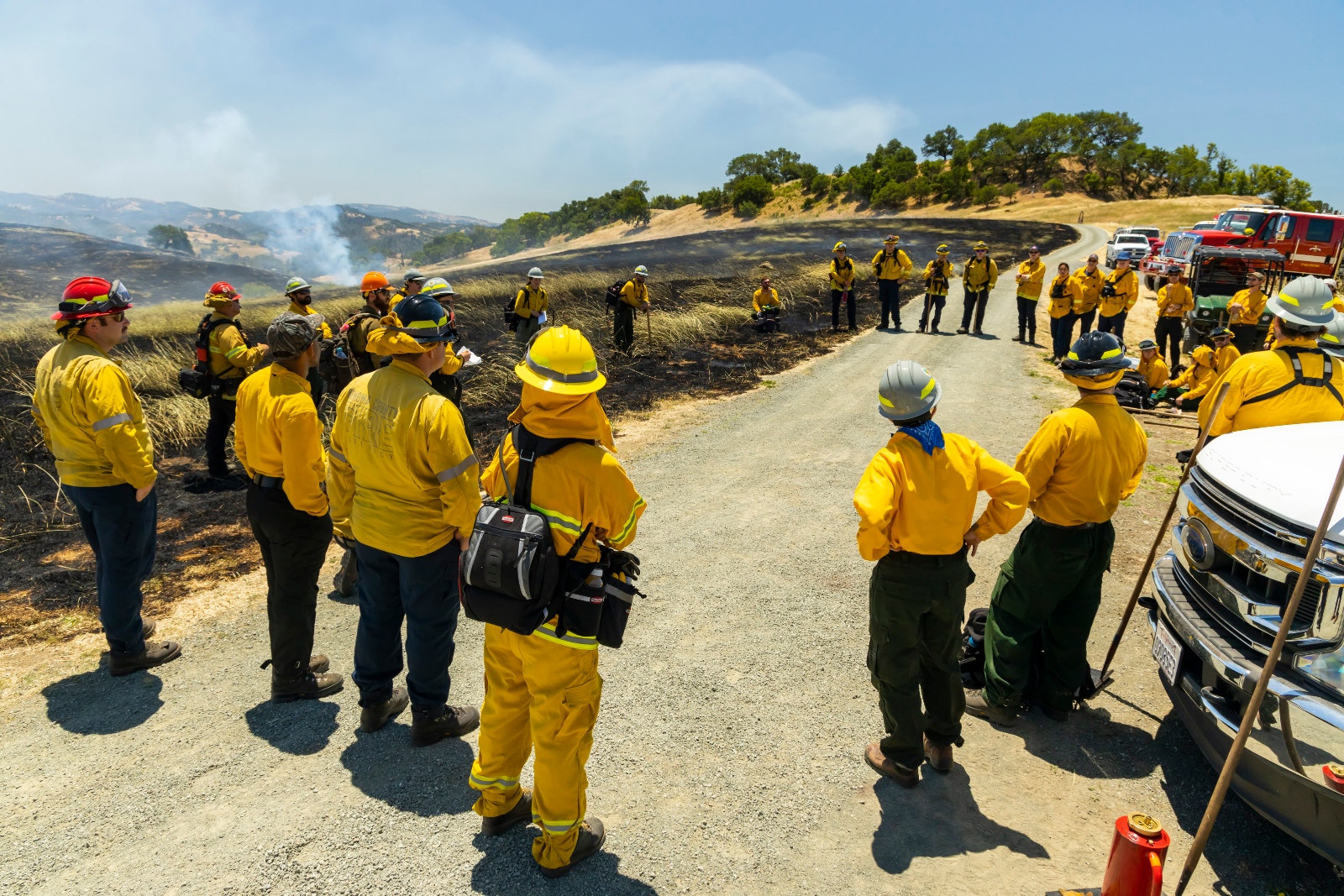
In recent years, other nonprofits, public agencies, and private individuals have been finding ways to restore Indigenous ownership in other innovative ways: In 2016, a private family in coastal Sonoma — with the support of the county and philanthropic dollars — worked with the Kashia Band of Pomo Indians of the Stewarts Point Rancheria to return 688 acres to the tribe.
Meanwhile, many studies that examine the success of specific wildfire-resilience practices in forests managed by diverse public and private agencies show that the most efficient and ecologically beneficial approaches typically involve at least some thinning or brush removal, followed by prescriptive or Indigenous burning. Effectively managed wildfires, mostly in remote forests, also can reduce the size and severity of future conflagrations while promoting biodiversity.
At this time, prescribed fires face many barriers in the West, including obtaining the necessary permits, the fear of liability and public backlash should something go wrong, too few people to do the job, and the small window of optimal weather conditions for safe burning. Given these obstacles, many public and private land managers, especially near urban areas, opt to thin without burning, typically followed by chipping or mastication (reducing leftover slash into small bits). While some studies show that such methods alone can increase wildfire resiliency, most research and field experience indicates that thinning coupled with beneficial fires is the most effective. But thinning without fire rarely brings additional ecological benefits, such as regeneration of fire-resilient trees and plants and promoting soil health.
While commercial logging of large trees alone does not lead to wildfire resiliency, in some forests ecological thinning can include that as one way of reducing density, promoting the diversity of species, or creating fuel breaks that allow for safe prescribed or cultural burns, said Scott Stephens. He is the principal investigator of the UC-Berkeley Blodgett Forest Research Station, which led a two-decade study evaluating various forest treatments. Stephens told me that fire, wildlife, and soil ecologists at Blodgett sometimes recommended removing large white fir trees. This, researchers found, resulted in faster growth, vigor, and diversity among the remaining trees. It also improved pyrodiversity and resilience against bark beetles. The revenue from saleable logs helped offset restoration costs.
But some environmentalists consider thinning a ploy to commercially log forests. One of the most vocal opponents is Chad Hanson, director of the John Muir Project. Hanson, who holds a doctorate in forest ecology from University of California, Davis, and his wife, Rachel Fazio, an attorney and co-lead of the John Muir Project, have filed dozens of suits against the U.S. Forest Service to block various plans to remove trees deemed a fire hazard.
In his research and articles, Hanson and his colleagues argue that the density of historical forests varied, and that high-severity wildfires do not harm forests but rather promote biodiversity and should be allowed to burn with minimal intervention. He fiercely opposes any tree removal beyond 100 feet of buildings and evacuation routes. Hanson argues that thinning removes a natural wind barrier to fire, and can increase its speed and intensity. He supports scaling up of prescribed, cultural, and managed wildfires.* “Fire alone is what we need,” Hanson told me. “Thinning is not needed. … And you don’t have to remove any trees before you do a prescribed fire.”
Most fire ecologists and practitioners disagree and believe removing small trees and brush, especially near residential areas, is essential to protect mature trees or reduce the risk of fires jumping over control lines. In recent years, in a rare effort within the scientific community, dozens of them came together to publish a series of rebuttals to efforts by Hanson and others who they believe are advancing “agenda-driven science.”
Susan Prichard, a fire ecologist at the University of Washington who has taken a leading role in the campaign, told me the benefits of ecological thinning coupled with prescribed burning are settled among fire ecologists, but the boisterous claims of a small group often receive equal weight in the media and courts. She compares them to the academically credentialed climate deniers who once got equal attention in the news despite volumes of data about the effects of global warming.
Hanson calls such criticisms “character assassination,” and this year published a study arguing that the data Prichard and her colleagues use contain a “broad pattern of scientific misrepresentation and omissions.” Hanson counters that wildfire resilience is best achieved by a focus on “hardening” homes with fire-resistant roofing and other tactics. He also calls for tree pruning and removal of brush and saplings near buildings and evacuation routes.
Research supports these practices and shows that even small upgrades can have a big impact on wildfire resilience. But protecting property and leaving forests alone overlooks the interdependence of wildlands and people. Forests store carbon. Trees capture rainfall and contribute to rivers that, here in California, deliver water to 25 million residents and businesses, including the farms that grow about one-third of the country’s vegetables and three-quarters of its fruit and nuts. When large patches of severe wildfires cut through dense, drought-parched forests, the ground starts to repel water. The runoff can pollute watersheds with ash and harm water-treatment facilities. Damaged forests also threaten important plants and wildlife and the Indigenous communities that depend upon them to sustain their culture.
Elected officials understand what’s at stake. In 2022 and 2023, the federal government sent $3.3 billion for forest management treatments in 10 Western states with 21 “high-priority landscapes” — forests and rangelands near communities, powerlines, highways, water supplies, or endangered species. Despite these unprecedented investments, progress has been slow across the West: Since 2012, only about 1.8 million acres of the estimated 50 million acres in need have been treated.
One factor is a chronic shortage of forest workers. Until recently, funding for restoration and wildfire resiliency was extremely limited. Permitting for thinning and burning poses big challenges, as does fear of litigation. But the impediment that forest and fire ecologists and others in the field mention most frequently remains public opposition to prescribed fires and, particularly in California, the removal of trees.
“There are many people who don’t like seeing vegetation removed, especially green vegetation,” John Melvin, the assistant deputy director of resource protection and improvement programs at Cal Fire, told me. “The 2020 wildfires began to change these attitudes, but we still have a lot of public education work to do.”
Surveys of public perceptions of resilience efforts are generally small, but overall, most people support mitigation efforts — yet opposition to them can appear more widespread than it actually is. A 2019 study in Colorado found that although just 27 percent of respondents opposed the thinning and burning proposed in their area, highly organized resistance to the effort received outsized attention during public hearings and was reflected by the media as being a broad sentiment.
Still, there are valid reasons to explain why people might oppose prescribed burning and strategic thinning. Studies show less than 2 percent of intentional fires jump their borders, the vast majority of those that do are contained, and few of them cause damage to homes and property — yet those that do draw intense news coverage. Deforestation is a key contributor to climate change and calls to plant more trees, regardless of the needs of a given ecosystem, are often (and inaccurately) portrayed as the best solution to the crisis. A legacy of resource exploitation by the U.S. Forest Service and timber companies doesn’t help.
Despite these deep and long-standing divisions, the fights over forest restoration are going through a radical shift, Cristina Eisenberg of Oregon State University’s College of Forestry told me. Since 2017, Eisenberg, who also directs the university’s Traditional Knowledge Lab, has been working with the U.S. Forest Service and the Bureau of Land Management to help public agencies strengthen partnerships with tribal nations on forest restoration projects. “The momentum is tremendous,” she said. “Finally, there are Indigenous people in the positions of power to help make sure this work is done right. We are at the very beginning of this change, but I’ve never seen anything like this.”
It’s a chilly morning at Pepperwood, and I start my day pulling non-native bull thistles. The thick, green stems glisten atop jet-black patches of soil. These areas, called burn scars, indicate where past volunteers burned the wood left behind by tree thinning.
The oak woodland where I’ve joined about 30 volunteers is one of many restoration sites Pepperwood has been thinning and burning since 2014. We are removing invasive weeds that without human intervention often displace indigenous plants.
When colonial settlers outlawed intentional fires, they removed an important process native grasses need to thrive, Devyn Friedfel, Pepperwood’s assistant preserve manager, tells us. Friedfel is warm and personable, and his intimate knowledge and passion for this land is infectious. The grasses settlers brought from Europe produce more seeds, which allow them to spread rapidly. These transplants are more fire-prone and poorly adapted to regrowth after a conflagration. Purple needlegrass, one of the native species my group is planting, can live over 200 years, and its roots can grow as deep as the oaks are tall. These long tendrils support oak seedlings, especially during droughts, by maintaining moisture in the soil and promoting the transfer of carbon and other nutrients to trees.
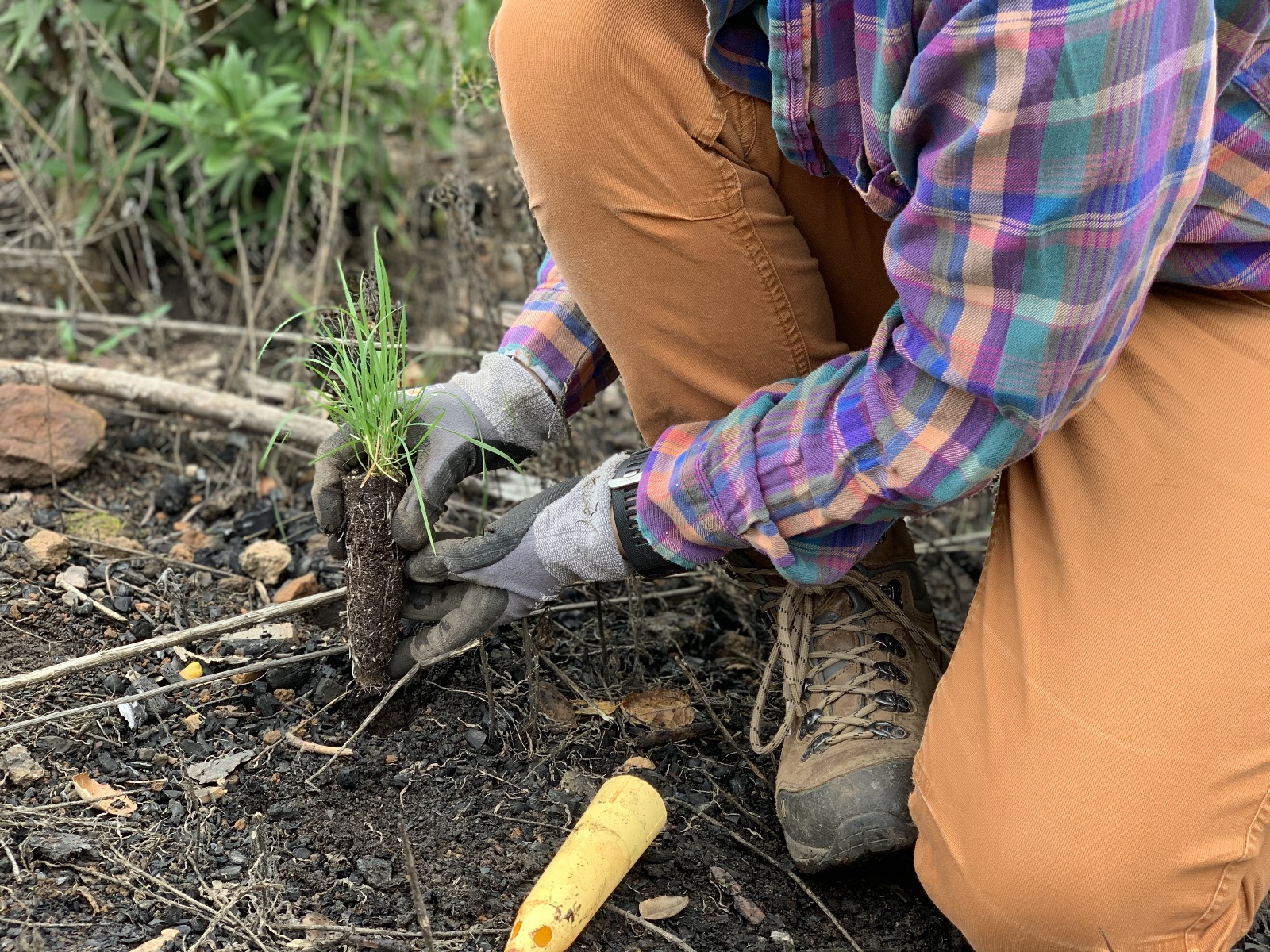
We break up into groups of three. After removing the thistles, I dig slender holes in the soil, while the two women in my group — a nurse and a copyright specialist — gently remove the grass seedlings from their nests and place the footlong shoots in the soil.
This restoration project, like most stewardship decisions at Pepperwood, was designed with the guidance of a Native advisory council. Five years ago, Michael Gillogly, who manages Pepperwood Preserve, and Clint McKay walked through this forest to discuss the council’s priorities, research, and the traditional Indigenous practices that could be incorporated here. Gillogly, who has been caring for and living on this preserve since 1994, also consulted a staff ecologist, wildlife specialist, and a forester before writing a detailed prescription for this area.
In 2019, a crew with chainsaws came through to prune large trees, take out every Douglas fir less than 10 inches in diameter and some bigger ones crowding out oaks, and remove brush growing alongside large trees. Volunteers then built and burned piles, learning how to work with beneficial fires and return nutrients to the earth.
Community engagement and education is an important aspect of the work. Nearly every week, Pepperwood guides lead hikes or workshops with landowners, urbanites, park managers, environmentalists, and young people. “You don’t change people’s opinions by preaching or hitting them over the head on social media,” McKay, whose workshops almost always sell out, told me. “I believe in small steps: Come and visit. See how we thin and prune to prepare for fire. See how we work after the fire.”
McKay brings Indigenous perspectives to nearly every aspect of programming: research, thinning and native plant uses, public education, and making Pepperwood more welcoming to Native people. Last year, for the first time in over 100 years, the council returned cultural burns to Pepperwood. Currently, the focus is on repopulating the land with more of the edible and medicinal native plants essential to sustaining Wappo culture.
Today, most researchers agree that addressing a catastrophic wildfire problem requires a new path — one rooted in both modern science and Indigenous knowledge and practices. Pepperwood provides a promising model of what this work looks like when organizations hire and actively engage Indigenous communities in their work. The nonprofit serves as a research hub where scientists, land stewards, and Indigenous members collaborate; it’s also a public education venue and a place that works actively to restore the connection between the land and its original inhabitants.
As a result of this approach, Pepperwood receives relatively little pushback against its thinning and burning. It also offers an unusually high number of hands-on workshops focused on forest stewardship and Indigenous culture in addition to the traditional approach of hikes focused on appreciation of animals and plants.
“How can we begin to move toward ecological and cultural sustainability if we cannot even imagine what the path feels like?” Robin Wall Kimmerer asks in Braiding Sweetgrass: Indigenous Wisdom, Scientific Knowledge, and the Teachings of Plants. A member of the Citizen Potawatomi Nation, Kimmerer is also a professor of environmental and forest biology at the State University of New York, where she has found that most students who grew up confronting the loss of biodiversity struggle to find examples of positive interactions between nature and humans.
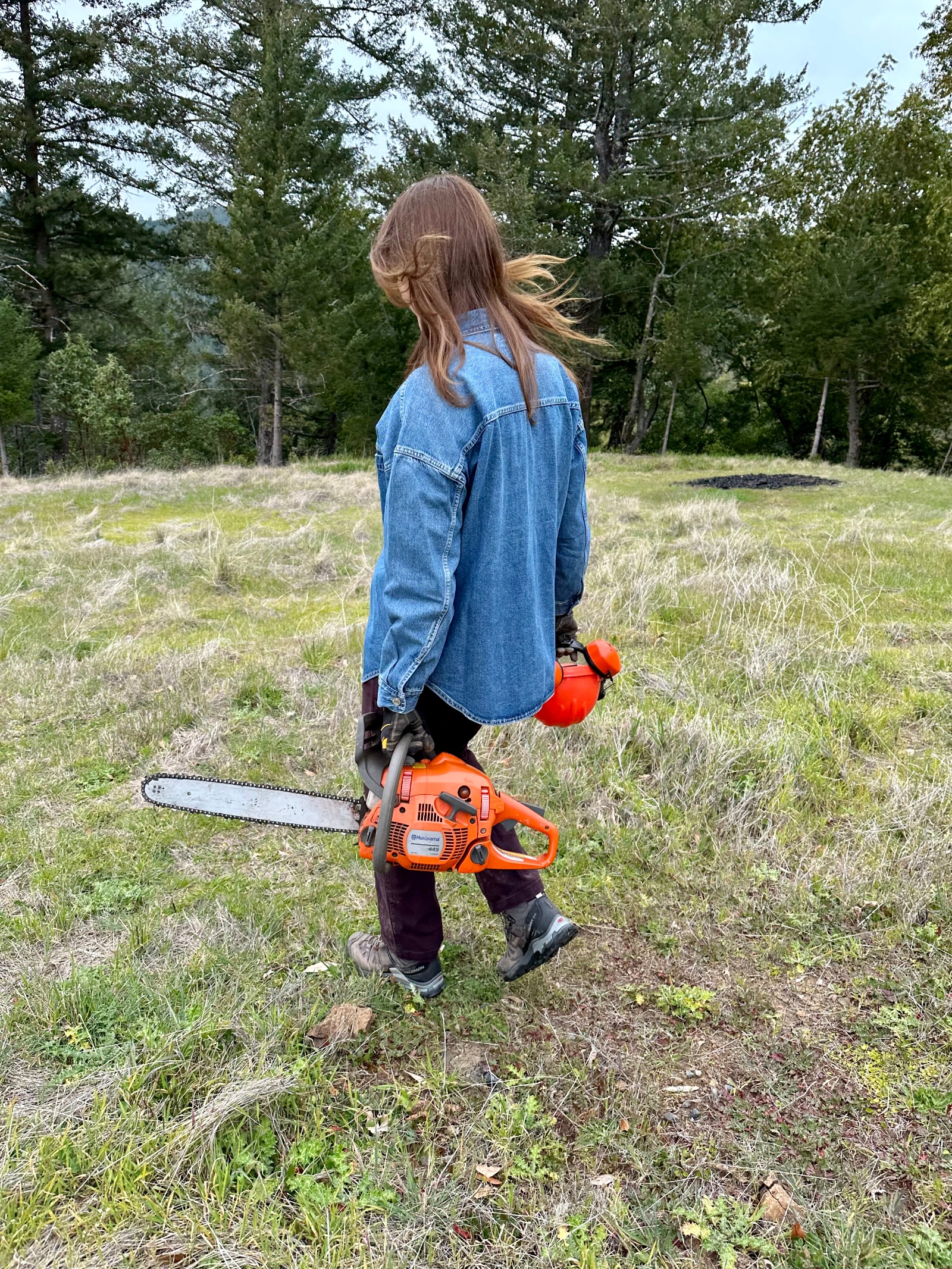
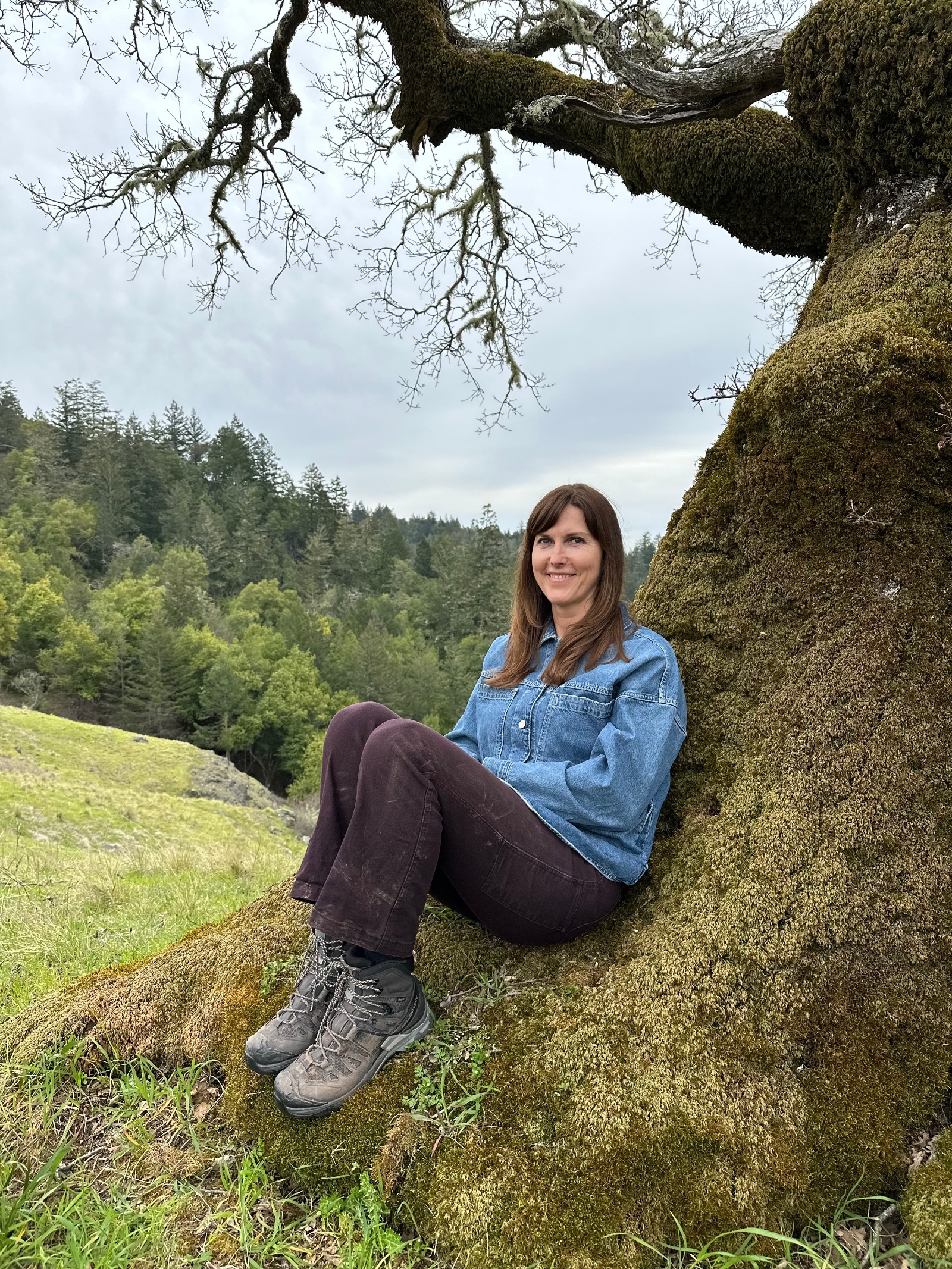
Weeding, planting, pruning, and using beneficial fires — in preserves like Pepperwood, our favorite parks, urban community gardens, and suburban yards — can help us develop a positive relationship with nature, Kimmerer writes. Tending forests and grasslands can help transform us from consumers of nature to stewards who express gratitude for the clean air, water, biodiversity, and beauty it offers in exchange.
Later that afternoon, the three of us plant our last seedling. We stand up to take in the gradual change happening around us. It’s a small project, but the effect on our psyche is immeasurable. For a few hours, we contributed to building a healthier, more resilient forest. As our workday comes to an end, I settle in the roots of a black oak. Its trunk is warm and stable, and, like every oak since that distant tree in Latvia that has ever provided me with shade and comfort, it renews my sense of endurance and possibility. As people gather their tools and begin to leave, I linger, asking for this oak’s continued guidance on how to pay closer attention to its needs and the well-being of the entire forest community.
*Editor’s note, August 29, 2023: This sentence has been updated to clarify Chad Hanson’s views on prescribed, cultural, and managed fires.




